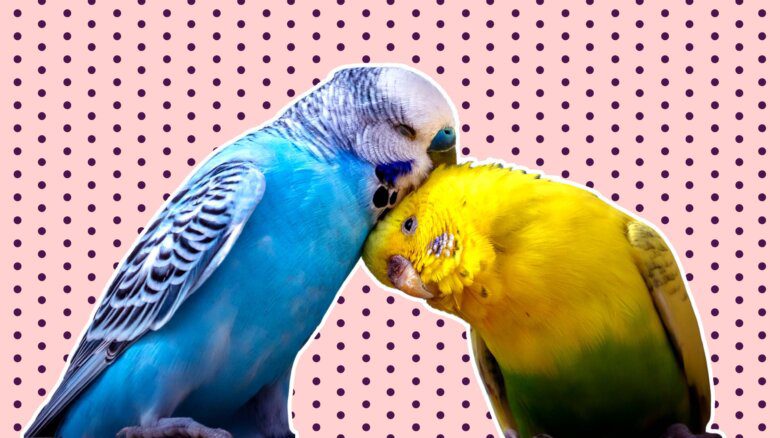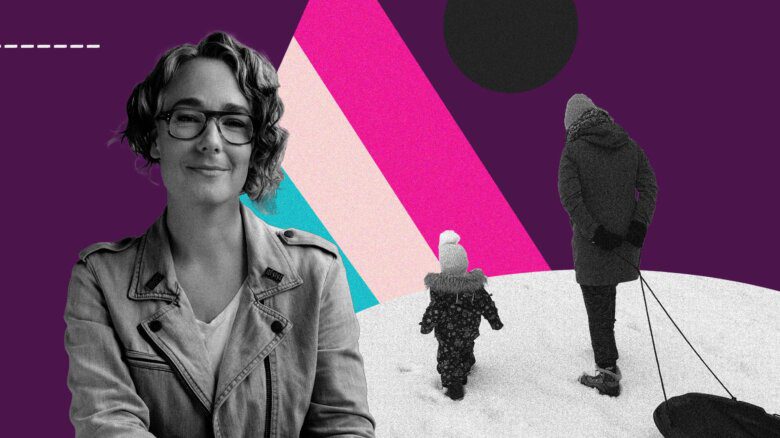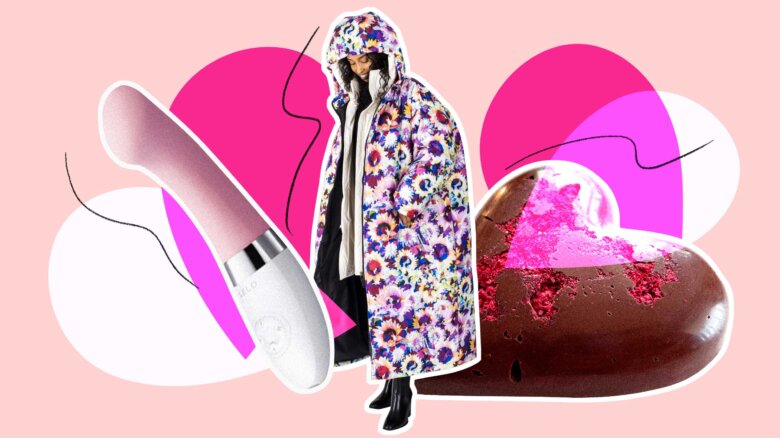In a society increasingly supportive of out queer couples, the issue of intimate partner abuse remains a skeleton hanging silently in the closet.
It’s an issue shrouded in taboos as strong if not stronger than in the straight world.
The issue goes far further than just physical abuse, says Jack Herman of West Enders Against Violence Everywhere.
A victim service worker, Herman says abuse can take many guises: physical, emotional, financial and even spiritual.
“[There’s] all kinds of mental abuse. [The victim] may not ever even get slapped,” Herman says.
One partner might control the money and deny the other’s spending desires.
One might not like the other’s friends and isolate him or her.
Body image criticism is a common form of abuse, as is something Herman refers to as hipness criticism, particularly common among gay men.
“‘You don’t party as much anymore, you’re not taking as much drugs anymore, you know, what’s your problem?'” Herman mimics.
“That’s abuse,” he says.
There are many ways for relationships to slide into unacknowledged power imbalances. But lesbians and gay men in abusive relationships have very few places to turn for help, Herman says. Gay men in particular face a near total absence of resources.
“I certainly don’t know of any resources available to queer men,” he says.
Some couch surf, others may wind up homeless after they decide to leave their partners. It’s not unknown, Herman says.
In the end, many abused partners return home rather than face the alternative. “A lot of times that’s the only place he knows and it’s better than going nowhere,” Herman says.
The small size of the lesbian community makes it difficult for women in abusive relationships to find peer support, says Dr Pega Ren, a clinical counsellor in Vancouver.
“We’ve all dated each other,” she says. This, she explains, can make it hard to find someone neutral to talk to, which leads to further isolation, which exacerbates the silence around abuse.
“Then you’re afraid to be alone and you don’t want to be rejected so you don’t leave. You want to make it right, to apologize,” she says.
And the cycle begins again.
The results can be tragic.
Indeed, the consequences can range from physical and emotional injury, including chronic fear, anxiety and depression, to suicide.
Though abusive relationships are by no means limited to partners of different ages, Herman says intergenerational relationships struggling with abuse face added assumptions.
It’s unwise, for example, to assume it’s always the older partner abusing the younger in a May-October relationship, he says.
“The older guy is so overwhelmed that this guy is in his life and the younger guy starts becoming the abuser in the relationship because he’s got all the power. ‘I’m the pretty one, I’m the young one. Everywhere you take me, people are drooling.’
“One particular couple, it went on for three years where the younger guy was physically abusing the older guy. The reason it ended was because there was an intervention. He threw the older guy down a flight of stairs and seriously wounded him. The police were called.”
Gay criminologist Doug Janoff suggests client-hustler relationship violence might be better understood as domestic violence as well.
In his book, Pink Blood: Homophobic Violence in Canada, Janoff says many queer homicide cases may actually be instances of hidden domestic violence.
He cites the 1992 Sudbury, ON death of James Moffatt, 48.
Steven Lynn, 23, lived with Moffatt for a year but did not regularly pay rent. After a night of drinking, Moffat grabbed Lynn’s “privates.” Lynn pushed Moffatt over a deck. He died.
Lynn hid Moffat’s body in a woodpile, later burning it. He and his girlfriend then went on a three-day spending spree in Toronto with Moffatt’s credit cards.
Lynn was charged with second-degree murder. It was reduced to manslaughter on appeal.
“Was it a murder? Was it revenge? Was it homophobic violence? Or was it domestic violence?” Janoff asks. “The water that separates the gaybashing cases from some of the domestic violence cases is very muddy indeed.”
Either way, Herman cautions people against judging victims.
He says there’s often a prejudicial attitude of “Well, what the fuck was he thinking getting into that relationship in the first place?
“You just re-victimize the victim,” he says.
“It doesn’t matter what he was thinking getting into the relationship. Maybe he made a bad choice. Maybe he made a stupid choice. The fact of the matter is nobody has a right to be abusive to another person whether that be on the street in a gaybashing or in an intimate relationship,” Herman says.
He says the issue goes from the West End to the back roads of BC.
Toronto-based Egale director Helen Kennedy agrees that same-sex partner abuse is a big concern across the country.
“As a community, we have to do something about it,” she says. “There’s a curtain of silence about it.”
Kennedy says queer spousal abuse is both underreported and, when it is reported, little is done about it.
“I think it’s a lot more common than we’d like to admit,” she suggests. “It’s hard to say because of the underreporting.”
Ren agrees. “I think it’s a bigger problem than we know about just as it is in any community. People are not talking. It’s a secret shame,” she says, noting that the shame around spousal abuse in the lesbian community mirrors that of the gay male and straight communities.
“If we named it, it would diminish,” Ren points out.
Kevin Kirkland penned the 2004 Abuse in Gay Male Relationships Report for the federal government.
Kirkland says abuse happens in about 20 percent of partnerships – queer or straight.
While he says the incidence rates are similar to those in opposite-sex relationships, Kirkland says the effects of that violence are amplified by the realities queers find themselves in when it comes to stigmatization both within the queer and straight communities.
Curiously, Kirkland’s 20 percent figure is higher than Statistics Canada’s recently released findings on the same topic.
The Statistics Canada study found that at least 15 percent of gays, lesbians and bisexuals surveyed reported being victims of spousal abuse, compared to only seven percent of heterosexuals.
Of the almost 24,000 people StatsCan surveyed, 1.5 percent identified themselves as gay, lesbian, or bisexual.
Kennedy thinks both the 15 percent and the 20 percent figures are conservative based on the anecdotal evidence she hears at Egale.
Indeed, a study in the October 2007 Journal of Urban Health: Bulletin of The New York Academy of Medicine found that 32 percent of gay and bisexual men are victims of intimate partner abuse.
The report, Intimate Partner Abuse Among Gay and Bisexual Men: Risk Correlates and Health Outcomes, found that of the men reporting abuse, 63.4 percent reported verbal abuse, 59.2 percent reported physical, and 57 percent reported sexual abuse.
Whether the incidence of domestic abuse in queer relationships is 15, 20 or 32 percent – and despite the equal (or greater) prevalence of abuse in queer compared to straight relationships – government funding and resources for BC queers in abusive relationships remains low to non-existent.
In fact, when the BC government handed out $1.8 million targeted at reducing domestic violence on Apr 12, there was no cash for the queer community.
“We have come a long way in making it clear that domestic violence is unacceptable in our society,” BC Solicitor General John van Dongen said in a news release.
“This additional funding will help to ensure that British Columbians have culturally appropriate information and the services they require to prevent acts of domestic violence.”
The funding announcement heralded the launch of the province’s third annual Victims of Crime Awareness Week.
Peter Topping says Vancouver’s LGBT Centre has been requesting anti-violence funding for years and has received some but not much.
The Centre received funding several years ago through the solicitor general’s office for an anti-violence pilot project whose work included relationships, he notes. But that funding was not renewed, a situation Topping calls “unfortunate.”
A spokesperson for the ministry told Xtra West that funding was for the one-time project and not renewable.
But in the past five years, the ministry says it has provided The Centre with almost $80,000 for a total of four special anti-violence projects, including $30,000 for a pilot project to provide resources and education for victim service practitioners in 2004-05.
Topping says The Centre wasn’t contacted at all about the new funding, despite its stated aim to provide “culturally appropriate information” to prevent domestic abuse. “I wasn’t even aware of that,” he says.
The ministry says the Apr 12 funding is for existing victim service providers to create new services, especially supports for immigrants and refugees, and to expand domestic violence units and elder abuse units in the Lower Mainland.
As such, The Centre was ineligible, the ministry says.
That said, the ministry notes The Centre can apply this summer for new service-provider funding.
Despite the lack of money and resources, the BC government’s study on domestic violence released Apr 16 did make at least passing mention of queers.
“Current reliable data regarding the experience of domestic violence among other marginalized groups – for example, gay, lesbian, bisexual, and transgender people; women who are poor; and women who have disabilities are also difficult to access,” the Keeping Women Safe: Eight Critical Components of an Effective Justice Response to Domestic Violence report’s executive summary says.
None of those groups were targeted in the Apr 12 funding announcement.
Ontario is far ahead of BC in providing funding and resources for queers facing domestic violence.
In partnership with Egale and David Kelley Lesbian & Gay Community Counseling, the Family Service Association of Toronto provides counselling services and literature to people in abusive situations.
It also provides services to court- and probation-mandated individuals charged with assaulting a same-sex partner.
Further, Toronto’s 519 Centre offers temporary housing for victims; assistance with reporting to the police; assistance with the criminal justice system and court support; referrals to legal, medical, social and counselling services; training to service providers on issues related to same-sex partner abuse; and produces and distributes information on hate crimes and same-sex partner abuse.
The 519 Centre is funded through the City of Toronto and capital campaigns.
Dr Jesman Mendoza works with the Family Service Association of Toronto. He recently completed his PhD in psychology. His thesis examined domestic violence among gay men.
He says HIV/AIDS and substance abuse are the top issues facing queers. Close behind, though, is domestic violence. But, there’s nowhere near enough funding to raise awareness of the issue, he says.
There’s even less to examine the effects of domestic abuse on queer families, he adds.
He says if there’s a need for anything it’s for shelter for abused men.
Herman suggests lobbying government for a 12-bed safe house for queer men in BC.
“You could probably fill it year round,” he says.
While he has no statistics to support his assertion, he says between gaybashings and spousal assault victims, such a facility would be useful.
“We should be lobbying probably the solicitor general through the victim service program funding and maybe even the Ministry of Health and social services.”
Men in abusive relationships currently have nowhere to go, he says.
At least some lesbians can receive help through what’s left of services for battered women and safe houses, he points out.
“The women of this province are light years ahead of us in recognizing intimate relationship abuse,” Herman says. “They pressured politicians to finally acknowledge the problem, to finally do some funding to get a safe place in critical situations. Nobody did it except for these women themselves and their allies.”
Ren says she has referred clients to shelters for battered women. She’s been told the facilities are “lifesavers.”
But, cautions Mendoza, if an abused lesbian can get into the safe house, so can her abuser.
Still, Herman thinks the time has come for gay men to lobby for services, funding and safe houses as many women have before them.
Before that can happen, though, Herman says gays and lesbians alike need to start by acknowledging there is a problem.
He says gay men in particular lack awareness about domestic abuse even in their own circles.
Kirkland agrees.
“Many gay men continue to lack awareness about intimate partner abuse and effective resources that they can access,” he writes. “Consequently, they remain in abusive situations.”
Mendoza agrees. “I think there’s a struggle for awareness and acceptance that it’s an issue for our community,” he says.
“There is a need to diminish the shame and consequent silence still associated with the problem,” Kirkland adds.
And the myths mainstream culture holds about queer relationships don’t help, he notes.
Those myths include the belief that men don’t need help, that boys will be boys, that gay men are sexually aroused by violence and that leaving is easier for lesbians and gay men who are not married.
“Those myths serve to create barriers to [people’s] ability to disclose abuse or seek help to deal with it,” Kirkland says.
He would like to see more effort made by health, social and community service providers to bring awareness to the issue of abuse in queer relationships.
Ren says she can’t speak to what other services might be needed, but she thinks the first thing gays and lesbians must do is take responsibility for our own actions.
Accountability is key, she says.
“If I hit you, I take responsibility for it.”

 Why you can trust Xtra
Why you can trust Xtra


